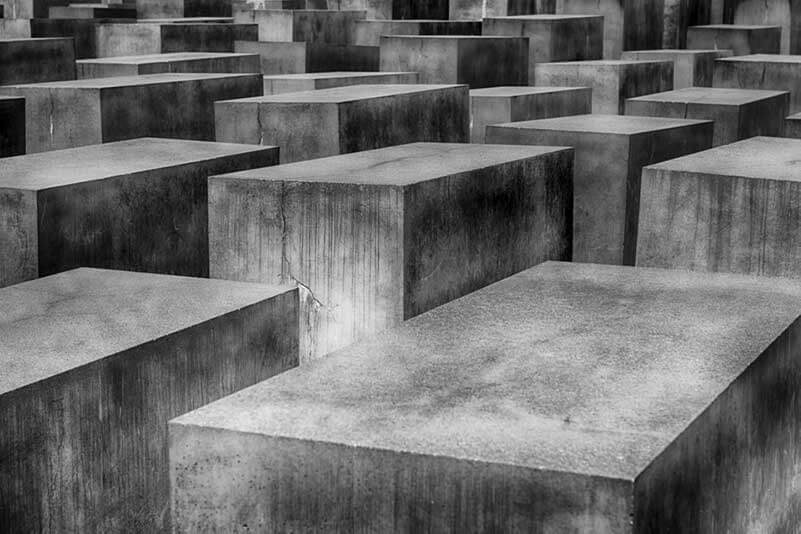- A super-material with apparently unlimited uses
- Concrete that’s two times stronger than usual
- Contrary to fears, this is a commercially viable wonder-material
Concrete is our most popular building material. It’s strong, long lasting, and easy to make – and has been since the Romans first started using it. Unfortunately, it’s also an environmental disaster: its primary ingredient, cement, accounts for 6 per cent of the world’s carbon dioxide emissions. This is largely because of the amount of this material we produce every year – for instance, in 2017 alone, the world made 4,100 million tonnes of the stuff.
Production on that scale is simply unsustainable, and following the Paris Agreement, intended to cut emissions and arrest global warming, it’s clear that cement production needs to be reduced. But that’s hard to do as the world’s population is surging upward, demanding more housing and infrastructure. What we need is a way to use less concrete, and thus less cement, and still get all that building done.
Now, scientists at Exeter University think they may have a solution. By mixing concrete with graphene, a wonder material that’s essentially nothing more than carbon, they’ve managed to produce a super-strong, super-resilient construction material. Can this breakthrough help us keep building the future, while helping to protect the environment?
A super-material with apparently unlimited uses
Graphene is a simple substance with complex properties. At its most basic, it’s just a single layer of carbon atoms arranged in a hexagonal matrix, an ultra-thin strip of a pretty basic element. But what graphene can do is simply amazing.
Graphene takes advantage of the strange properties of the nano-world. It’s about as close to a 2D substance as you can imagine, but despite being ultra-thin, scientists are discovering that it’s useful for virtually everything. Graphene is a semiconductor with a huge range of uses in electronics, from sensor-tech to LED screens, and it’s being researched as a replacement for lithium batteries. In healthcare, its strange properties make it ideal for medical applications, and it’s been demonstrated to be a potential carrier for life-saving medicine, allowing scientists to target the cells they want to receive a drug. It’s been used experimentally to detect the regrowth of brain tumours. And from fuel cells to solar panels, this conductive, strong, ultra-lightweight material is everywhere in emerging tech. But for construction, graphene’s most important quality is feather-weight super-strength.

Concrete that’s two times stronger than usual
As the Berkeley Lab reports, graphene “has been touted as the strongest material known to exist, [and it’s] 200 times stronger than steel [and] lighter than paper”. That’s a winning combination for construction, and Monica Craciun, a professor of nanoscience in the Engineering Department at the University of Exeter, wondered if it could be the miracle ingredient in ‘green’ concrete. She suspended graphene in water, and then used this wonder-liquid as an ingredient for her concrete blocks. When she tested them, her team was amazed: the concrete was two times stronger than usual, four times more water resistant, and far more elastic. That’s a greater improvement than anyone anticipated, and together, that means that half the material can be used while still outlasting conventional concrete.
That could mean cutting CO2 emissions in half while still providing the material for housing, dams, buildings, and bridges. As Craciun explains, “Our cities face a growing pressure from global challenges on pollution, sustainable urbanisation and resilience to catastrophic natural events. This new composite material is an absolute game-changer in terms of reinforcing traditional concrete to meet these needs.”
Contrary to fears, this is a commercially viable wonder-material
But not everyone is convinced that this new graphene-concrete is commercially viable. Though excited by its possibilities, Franz-Josef Ulm, the director of the Concrete Sustainability Hub at MIT, worries about the high cost of graphene, given just how much concrete we use. But as Craciun explains, Ulm needn’t be concerned. “It’s not expensive because the process is very simple. It is basically similar to a kitchen blender where you put graphite, water and soap molecules and you produce graphene.” With her easy-to-make graphene, we can mix commercial amounts of the super-substance, adding it to concrete everywhere.
And don’t underestimate how game-changing that really is. When support structures like walls and columns only require half the material they do now, not only does that open new possibilities for design and architecture, but it speeds construction time and cuts emissions at the same time. That’s better for people and the planet, a win-win brought to us by scientific ingenuity and nanotechnology.
Share via:


